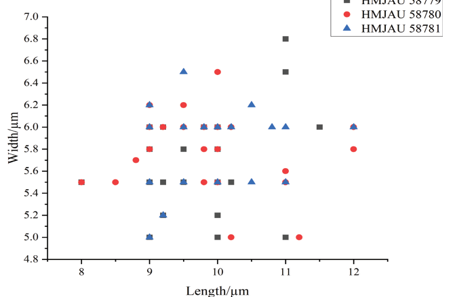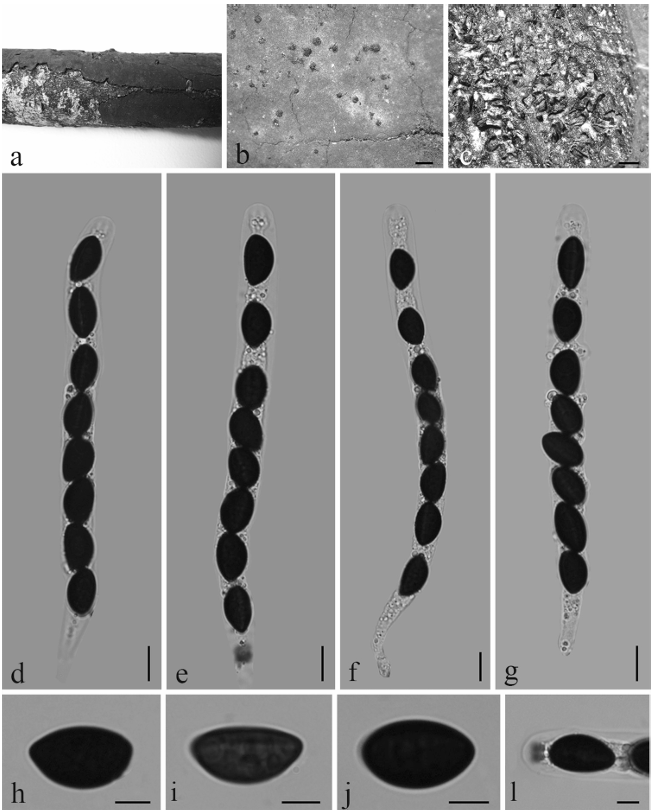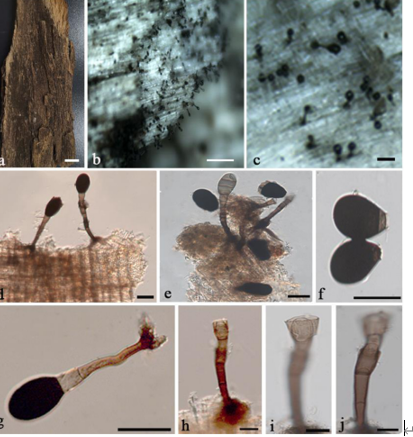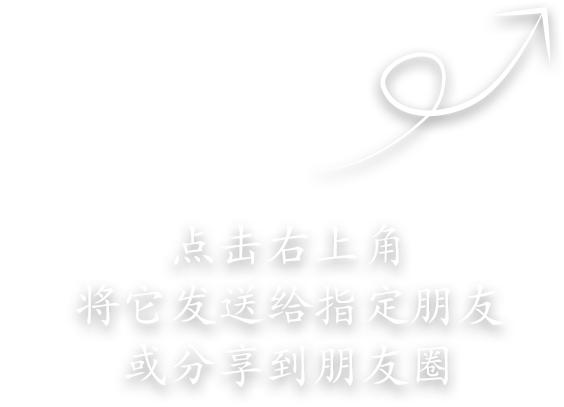Cunninghamella globospora H. Zhao & X.Y. Liu sp. nov.2021
MycoBank No.: 838023
Holotype: CHINA, XINJIANG: Manas County, 44°43’’10’’N, 86°17’03’’E, from the soil sample in salt marshes, July 1, 2015, Jing Zhu, (holotyp HMAS 249159, living ex-holotype culture CGMCC 3.16020.)
Morphological description
Sexual morph:Colonies on SMA floccose, reaching 9 cm in 5 d at 28°C, initially white, soon gray, finally gray-brownish, and gray reversely. Hyphae branched, 4.34–18.00 mm diameter, and septate when old. Stolons present. Rhizoids simple, and fingerlike. Sporophores erect or recum[1]bent, arising from stolons and aerial hyphae, main axes usually aequilate and 4.79–24.85 mm diameter, rarely gradually thicken upwards, primary branches 37.85–459.72 mm long and 2.86–13.74 mm wide, re[1]branching or third-branching into branchlets. Vesicles hyaline to brownish, globose or subglobose, sometimes expanded at the bottom, bearing lots of pedicels which are left after sporangiola fall off, axial vesicles 19.04–43.62 mm diameter, and lateral vesicles 13.74–27.46 mm diameter. Pedicels 1.00–3.07 mm long. Sporangiola globose, 9.09–14.73 mm diameter, and growing on vesicles with pedicels. Chlamydospores absent. Zygospores absent.
Asexual morphs:
Cultures: Maximum growth temperature: 46°C.
Habitat: : globospora (Lat.), referring to the shape of the sporangiospores.
Distribution: Soil in Xinjiang and Beijing, China.
GenBank Accession: ITS = MW264133; LSU = MW264074
Notes: On the medium SMA at 28°C, the Cunninghamella globospora is distinguished from its closely related species Cunninghamella inter[1]media K.B. Deshp. & Mantri 1966 by sporangiola and colonies. The species C. intermedia was nom[1]inated with the sporangiola being intermediate among four species. The sizes of sporangiola
in the new species C. globospora (9.09–14.73 mm diameter) are smaller and more uniform than those in C. intermedia (8.00–23.00 mm diameter). And, colonies are gray-brownish in C. globo[1]spora but “Hair Brown” in C. intermedia.Except for these discrepancies, they are similar in other characteristics, such as branched and sept[1]ate hyphae, fingerlike rhizoids, and long primary branches.
Reference: Two New Species in the Family Cunninghamellaceae from China[J]. Zhao Heng,Zhu Jing,Zong Tong Kai,Liu Xiao Ling,Ren Li Ying,Lin Qing,Qiao Min,Nie Yong,Zhang Zhi Dong,Liu Xiao Yong. Mycobiology. 2021.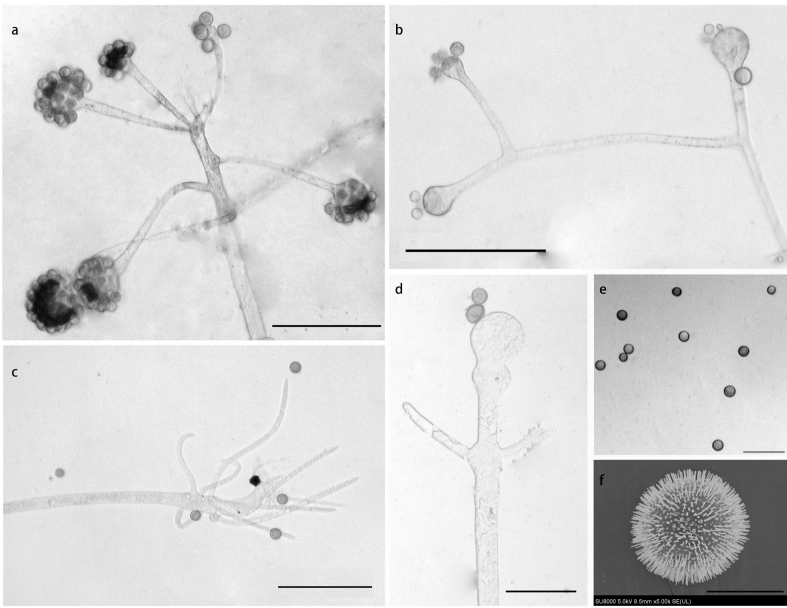
Morphology of Cunninghamella globospora sp. nov. CGMCC 3.16020 (ex-holotype strain). (a, b) Sporophores showing characteristic branching patterns; (c) Rhizoids; (d–f) Sporangiola. Scale bars: (a–c) = 100 lm; (d, e) = 50 lm; (f) = 10 lm.


